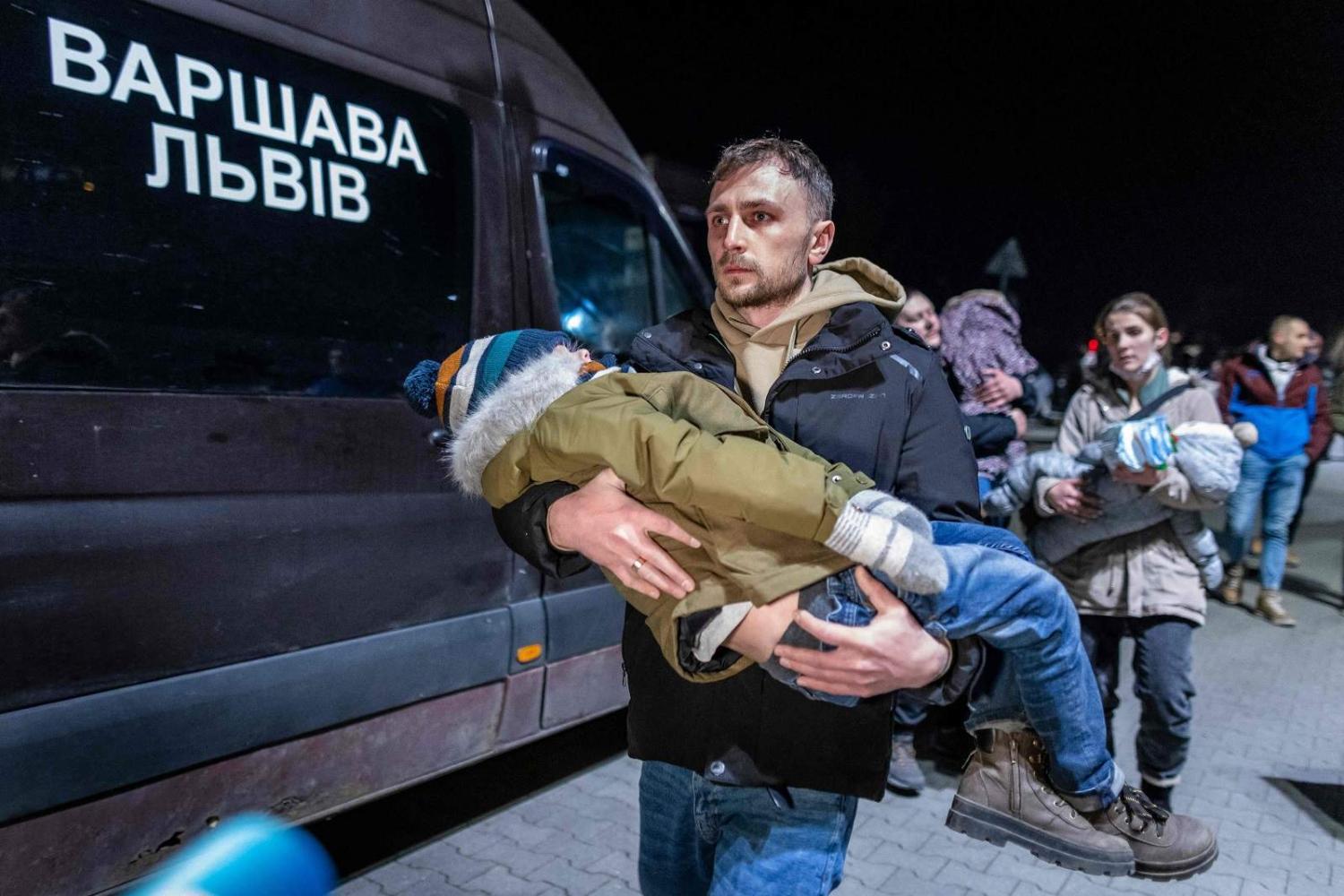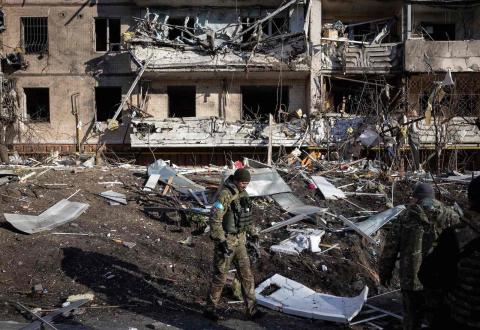Six days after Russia invaded Ukraine, a mass exodus has begun. At least half a million people are estimated to have fled Ukraine, around half of them to Poland, and others to Hungary, Moldova and Romania. Hundreds of thousands more are internally displaced, either heading to safer locations within Ukraine, or towards the border. In recent days, 70-hour long queues were reported at the Polish border. The grimmest estimates are that up to five million people may be forced from their homes in Ukraine if there is no diplomatic denouement, and resistance becomes entrenched.
What is striking so far is the generosity of the states where refugees are arriving. Poland is providing shelter to them, while simultaneously building a border wall to keep out Middle Eastern refugees stranded in Belarus. Hungary, whose prime minister has previously labelled refugees a threat, is welcoming Ukrainians. Western Europe, which seems a likely onward destination for many Ukrainians in the near future, has been more circumspect, but still positive: Germany has offered to help Poland assist refugees; the United Kingdom has waived visas for close family members of Ukrainians already residing in the United Kingdom; and Austria has said it will take refugees “if necessary”.
The mantra “the enemy of my enemy is my friend” is compelling; but it has not always been.
All this is in stark contrast to the paroxysm of angst and anger that seized Europe during the 2015 refugee crisis, when around one million Syrians arrived. There are political, cultural and legal explanations for the difference; but all of them have expiry dates.
It still seems very unlikely that the states on the frontline of the refugee crisis will face a direct threat from Russia, but they all harbour a deep mistrust, based on relatively recent history. The mantra “the enemy of my enemy is my friend” is compelling; but it has not always been. Only last year, many NATO allies – as well as Australia – were accused of abandoning people at risk because of their association with them to reprisals in Afghanistan. Neither, clearly, did it apply to Syrians fleeing the Assad regime. The political rhetoric will also run up against the political reality soon enough, when elections in Hungary (and France) later this year, and Poland next, will force politicians to balance an influx of refugees with the economic demands of the post-Covid recovery, and rising inflation and fuel prices. Already the United Kingdom has warned that extremist groups may infiltrate the Ukrainian exodus, a familiar (and largely unfounded) trope to justify restricting immigration and asylum.

Another contrasting feature between the Syrian and Ukrainian influx to Europe is crudely but critically the race and religion of the people involved. Anti-immigration sentiment in Europe in recent years has been fuelled by racism and Islamophobia. There are also other cultural factors at play. Before the current conflict, there were around 150,000 Poles and 150,000 Hungarians in Ukraine, and many of them are among the first wave of people leaving to come home. Ukrainians are heading to countries where there is a very significant Ukrainian diaspora, numbering about 1.2 million in Poland and 500,000 in Moldova. Because of a prohibition on Ukrainian men leaving the country, the majority of refugees are women and children, traditionally perceived as less of a threat. These demographics will shift; more men, and possibly those who have fought, will flee. The number of foreigners returning home and Ukrainians joining family members abroad will also diminish, potentially severing the cultural ties of generosity.*
The international community has been made to look weak by conforming to the rules-based international order.
A final reason for Europe’s generosity is the proposal to provide temporary protection – rather than full refugee status – for Ukrainians. This is significant for host states because the rights associated with temporary protection are fewer than those to which refugees are entitled; temporary protection status is determined according to national laws and policies rather than international convention; and, of course, it is intended to be temporary, contrasting with the permanence that refugee status typically bestows in Europe. A similar approach was adopted during the 1990s for successive waves of Bosnians then Kosovars into Europe; it was lauded for providing immediate protection and assistance, but criticised for suspending access to rights for people who were clearly refugees. As with the Balkans war experience in the late 1990s, temporary protection is time-limited, typically to three years, after which a decision will need to be made whether to return people or process them as refugees.
The political and popular solidarity for Ukrainians on display in Europe today is remarkable; but it is likely to wane over time, despite the UN’s latest appeal to raise $1.7 billion in humanitarian funding. The best way to lock it in is to offer Ukrainians pathways to citizenship in Europe, whether as refugees or through work and residence permits. This will allow them to integrate, but also provide a safety net should they return to Ukraine.
The international community has been made to look weak by conforming to the rules-based international order. It can look strong again by conforming to international refugee law.
* A reference in this article to reports Poland had refused entry to Nigerian students has been deleted following a clarification by the news organisation cited.

